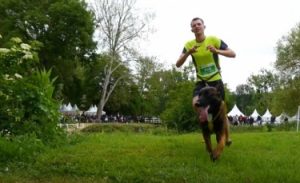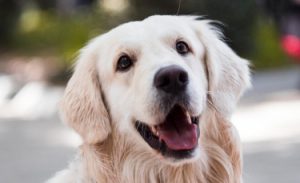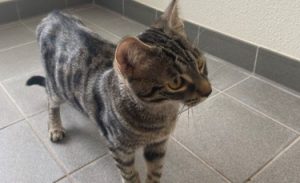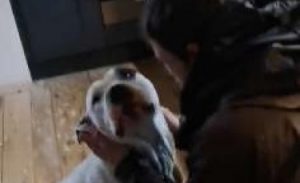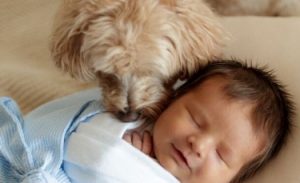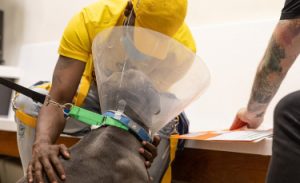The Norwich Terrier is a small dog, one of the smallest among the terrier breeds. Low on legs, solidly built despite its small size, it also has good bone structure. Its resemblance to its close cousin, the Norfolk Terrier, is very strong. It differs only by the aspect of its ears: those of the Norwich Terrier are straight, while those of the Norfolk Terrier are drooping.
<!–
–>
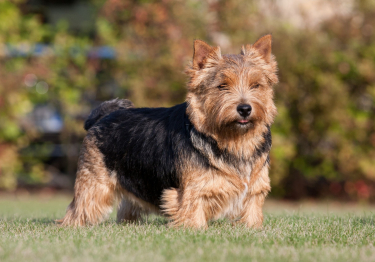
Hypoallergenic breed
| Half-long | |
| Britain | |
| Small | |
| Round |
| Sex | Weight | Cut |
|---|---|---|
| Female | From 4 kg to 5 kg | From 23 cm to 25 cm |
| Male | From 4 kg to 5 kg | From 23 cm to 26 cm |
History of the breed
Until around the middle of the 19th century, the Norwich Terrier was not clearly distinguished from the Norfolk Terrier . Both are from the same region in England, Norwich being a town in the county of Norfolk. They are made from crosses of different terrier breeds , including the Glen of Imaal Terrier, the Cairn Terrier and the Dandie Dinmont Terrier. It is mainly the subjects with red coats that were chosen to develop the Norwich Terrier and Norfolk Terrier.
Long used, like its close cousin, for hunting pests (rats, badgers) and foxes, it then gradually established itself as a companion and show dog. He was incorporated into the register of the English Kennel Club in 1932. It was definitively recognized by the Fédération Cynologique Internationale on October 16, 1954.
Physical features
His coat: hard in texture, lying straight against the body and lined with a fairly dense undercoat. Longer at the level of the head, it forms a collar around the dog’s face. The eyebrows and mustaches are rather provided.
Its color: any shade of wheat, red, black and tan or grizzled.
His head: large, slightly rounded skull. The muzzle is strong and wedge-shaped, the lips are tight and the jaws are strong. The stop is well marked.
His ears: triangular in shape, straight when the dog is awake, sometimes lying back when resting. Set wide apart, medium in size and with pointed ends.
His eyes: oval in shape, rather small, dark brown or black, shiny, showing great liveliness.
Its body: compact, with the top line horizontal. The back is short, the chest well arched and lowered.
Its tail: carried cheerfully and straight. Whole (uncut), it is moderately long and proportionate to the rest of the body. Thick at its attachment and thinning towards its end. Cut, it is only moderately cut.
Behavior and character
| Affectionate | |
|---|---|
| Calm | |
| Protective | |
| Independent | |
| Hunter | |
| Barks / howls |
Behavior with others
| Cohabitation with children | |
|---|---|
| Sociable with other animals | |
| Love strangers |
The Norwich Terrier is a dog full of energy and liveliness. Intrepidity and friendliness characterize this breed, which does not have a particular tendency to seek confrontation. He is a good companion for his master, his family , but also other dogs, since he is naturally sociable . On the other hand, he can be somewhat turbulent with small animals due to his rather assertive terrier instinct. He is a good guardian , signaling by his insistent barking the possible visits of strangers. As with regard to his physical appearance, he has many traits and behavior in common with the Norfolk Terrier.
Education…
The Norwich Terrier must be educated in a manner that is both firm and fair . He needs just as much to be reframed from an early age as to benefit from the tenderness of his master . He must also be accustomed early enough to the presence of small animals, especially cats and rodents, in order to prevent abrupt behavior against them.
The Norwich Terrier
is it right for you? Take the test!
Education
| Clever | |
|---|---|
| Obedient |
Living conditions
| Suitable for apartment living | |
|---|---|
| Good for new masters | |
| Love it hot | |
| Love the cold |
Due to its small size, the Norwich Terrier can quite lead a happy and fulfilled life in an urban environment. It also adapts to apartment life on condition, of course, to take it for a walk frequently. A house with a fenced garden will suit him perfectly , since it gives him the opportunity to exercise as much as he wants. It adapts to all family situations, it is advisable to remain careful if it is in the presence of small animals and rodents at home.
Health
| Solid | |
|---|---|
| Ease of gaining weight |
The Norwich Terrier is a robust dog as a whole. Thanks to its double coat, hard and dense, it is quite resistant to cold and bad weather. Nevertheless, the health of his skin should be watched closely, as he can suffer from various skin conditions such as eczema .
Hypoallergenic breed
Yes
Litter size
NC
To protect you from these risks and insure your companion in case of health problems, Woopets recommends a Norwich Terrier dog insurance .

function showAssuranceForm () {var siteReferer = var id_race_association = ”; //console.log(id_race_association);success: function (html) {}});}document.addEventListener (‘DOMContentLoaded’, () => {$ (‘# assuranceModalBanner’). on (‘show.bs.modal’, function (event) {showAssuranceForm ();});});
Life expectancy
The life expectancy of a Norwich Terrier is, on average, less than 0 years.
Calculate the human age of your Norwich Terrier!
To choose… 1 year 2 years 3 years Four years 5 years 6 years 7 years 8 years 9 years 10 years 11 years old 12 years 13 years 14 years old 15 years old 16 years old 17 years 18 years old 19 years old 20 years 21 years old
Maintenance and hygiene
| Ease of maintenance | |
|---|---|
| Cost of maintenance | |
| Hair loss |
| Drool level | |
|---|---|
| Ease of grooming |
The Norwich Terrier remains subject to a moult occurring twice a year , mainly in spring and autumn. However, his hair loss is moderate . It only requires regular maintenance. Its dietary needs are also modest: 110 grams of kibble (including 70 grams of meat) are enough to meet its needs.
Exits…
The Norwich Terrier is in essence an active dog. He cannot spend his time doing nothing at home, due to his strong terrier instinct. Daily outings and exercises help maintain emotional and physical balance.
Hygiene…
It should be brushed once or twice a week with a wire brush . Dogs living outside the city need to brush more frequently to effectively remove plant residues and dirt that can get lodged in their coat. His skin should be inspected frequently for any signs of eczema. Repetitive clipping and haircuts should be avoided.
Price and budget
Purchase price
Mini
€ 1,400 Maxi
1600 €
The purchase price of a Norwich Terrier is between € 1,400 and € 1,600.
Annual maintenance cost
Mini
NC Maxi
NC
The annual maintenance cost of a Norwich Terrier is between NC and NC.
No name is currently proposed. Use our tool to find your Norwich Terrier’s name!
Want the best for your dog?
Create the tailor-made diet for your Norwich Terrier
I discover !
PROMO -30% | Delivered to you!

Physical activity
| Athletic | |
|---|---|
| Energy level | |
| Potential to play |
Others
| Master character <span class="btnTooltip qTip2" title="- Calm: the master must be gentle and know how to show patience. – Active: the owner must be energetic and dynamic to live in harmony with his dog. – Hyperactive: the owner must be stimulating and very restless to suit the temperament of his dog.”> |
Calm |
|---|
We talk on the forum
welsh terrier / AIREDALE TERRIER
Guest message
Article on shih tzus, chihuahuas, bichon and yorkshire terrier
Message from Toutourazzi
Room N ° 9: The American Staffordshire Terrier
Message from loveasian
flight of my yorkshore terrier bitch emi
Message from Chantal Pelaprat
Looking for a Boston terrier
Message from MaMoune Do.ati
Do you have a question about the Norwich Terrier?
Do not hesitate to ask Woopets visitors for advice on the forum!



